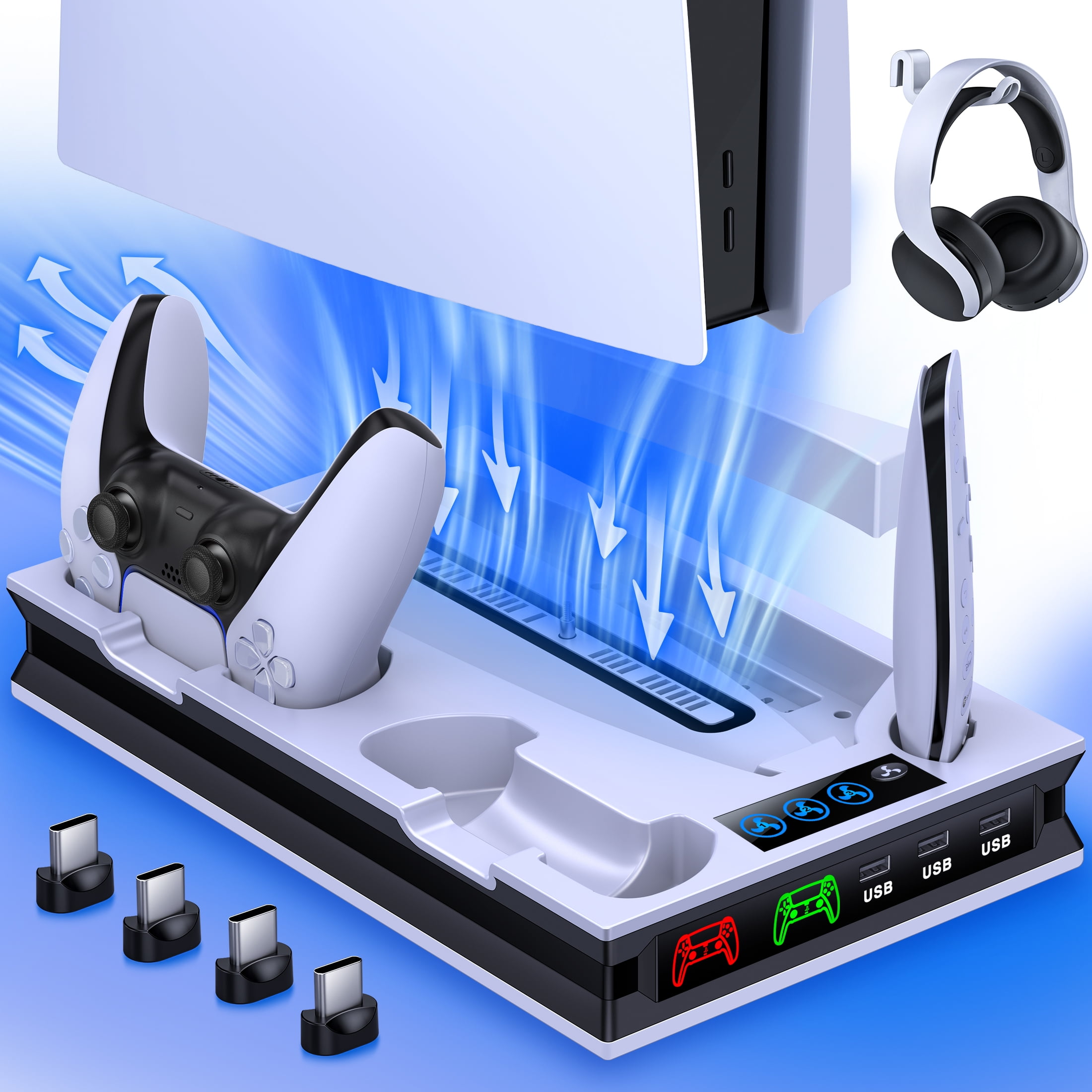
Amazon.com: PS5 Holder Wall Mount Stand - Playstation 5 Game Controller Holder Wall Shelf Play Station 5 Console Digital and Disc Edition - PS5 Wall Mount Kit Including 2 Accessory Holders for

Amazon.com: Bionik Power Stand for Playstation 5: Dual PS5 Controller Charging Station with Overcharger Protection - Power Adapter Included (BNK-9067) - Playstation 5 : Everything Else

Amazon.com: FYOUNG Horizontal Hub USB Port Stand for PS5, Base Stand Compatible with Playstation 5 Disc & Digital Edition, Upgrade Accessories Stand Holder for PS5 Console (White) : Video Games
![Amazon.com: NexiGo PS5 Accessories Horizontal Stand, [Minimalist Design], PS5 Base Stand, Compatible with Playstation 5 Disc & Digital Editions, White : Video Games Amazon.com: NexiGo PS5 Accessories Horizontal Stand, [Minimalist Design], PS5 Base Stand, Compatible with Playstation 5 Disc & Digital Editions, White : Video Games](https://m.media-amazon.com/images/I/510uy80pN3S.jpg)
Amazon.com: NexiGo PS5 Accessories Horizontal Stand, [Minimalist Design], PS5 Base Stand, Compatible with Playstation 5 Disc & Digital Editions, White : Video Games

Amazon.com: NexiGo PS5 Vertical Stand with Headset Holder and AC Adapter for PS5 Disc & Digital Editions, RGB LED Light, Dual Controllers Charger, 12 Game Rack Organizer, Hard Drive & Remote Slots,

BEBONCOOL PS5 Stand Cooling Fan with Dual Controller Charger Station for Sony Playstation 5 Game Console,PS5 Controller Accessories-White - Walmart.com

Amazon.com: PS5 Stand and Cooling Station with RGB LED Controller Charging Station for Playstation 5 Console, 2H Fast PS5 Controller Charger, PS5 Accessories with 3-Level Cooling Fan, Headset holder, 3 USB Hub :
![Amazon.com: NexiGo Wall Mount Set for Playstation 5 (Disc & Digital), [Space Saving & Improved Airflow] Sturdy Steel Wall Stand Holder Mount PS5 Console Near or Behind TV w/Controller Holder & Headphone Amazon.com: NexiGo Wall Mount Set for Playstation 5 (Disc & Digital), [Space Saving & Improved Airflow] Sturdy Steel Wall Stand Holder Mount PS5 Console Near or Behind TV w/Controller Holder & Headphone](https://m.media-amazon.com/images/I/51+aSEwtnXL.jpg)
Amazon.com: NexiGo Wall Mount Set for Playstation 5 (Disc & Digital), [Space Saving & Improved Airflow] Sturdy Steel Wall Stand Holder Mount PS5 Console Near or Behind TV w/Controller Holder & Headphone

Amazon.com: OIVO PS5 Stand with Cooling Station and PS5 Controller Charging Station for Playstation 5 Console Disc/Digital Edition, PS5 Cooling Fan Stand, PS5 Accessories Vertical Stand with Pull-Out Game Slots : Video

PS5 Stand positions - How to attach the stand vertically or horizontally and find the screw for the PlayStation 5 explained | Eurogamer.net





/cdn.vox-cdn.com/uploads/chorus_asset/file/22007926/ssarkar_201029_ply1040_0010.jpg)


:no_upscale()/cdn.vox-cdn.com/uploads/chorus_asset/file/22007921/ssarkar_201029_ply1040_0005.jpg)

/cdn.vox-cdn.com/uploads/chorus_image/image/67731973/ssarkar_201029_ply1040_0017.0.jpg)
:no_upscale()/cdn.vox-cdn.com/uploads/chorus_asset/file/22007918/ssarkar_201029_ply1040_0002.jpg)

